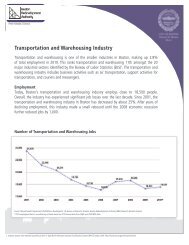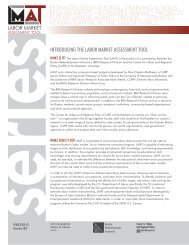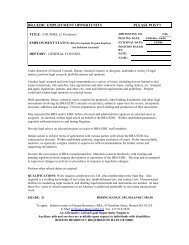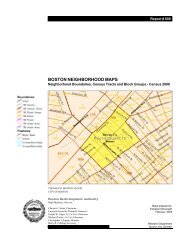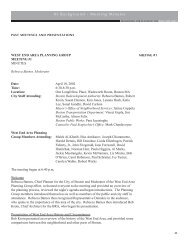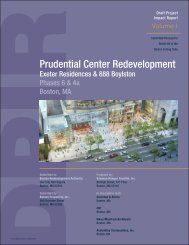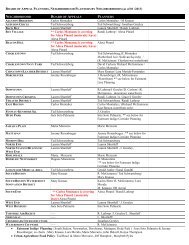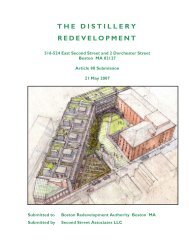point cover jan 13 - Boston Redevelopment Authority
point cover jan 13 - Boston Redevelopment Authority
point cover jan 13 - Boston Redevelopment Authority
You also want an ePaper? Increase the reach of your titles
YUMPU automatically turns print PDFs into web optimized ePapers that Google loves.
\\MABOS\projects\1<strong>13</strong>81.00\reports\Article80\<br />
Expanded_PNF\04_Environmental_FINAL.do<br />
c<br />
Vanasse Hangen Brustlin, Inc.<br />
The Point, <strong>Boston</strong><br />
Frequency - Sounds are comprised of acoustic energy distributed over an array of frequencies. Acoustic<br />
frequencies, commonly referred to as tone or pitch, are typically measured in Hertz. Pure tones have all<br />
their energy concentrated in a narrow frequency range.<br />
Sound levels are most often measured on a logarithmic scale of decibels (dB). The decibel scale compresses<br />
the audible acoustic pressure levels which can vary from the threshold of hearing (0 dB) to the threshold of<br />
pain (120 dB). Because sound levels are measured in dB, the addition of two sound levels is not linear.<br />
Adding two equal sound levels creates a 3 dB increase in the overall level. Research indicates the following<br />
general relationships between sound level and human perception:<br />
A 3 dB increase is a doubling of acoustic energy and is the threshold of perceptibility to the average<br />
person.<br />
A 10 dB increase is a tenfold increase in acoustic energy but is perceived as a doubling in loudness to the<br />
average person.<br />
The human ear does not perceive sound levels from each frequency as equally loud. To compensate for this<br />
phenomenon in perception, a frequency filter known as A-weighted [dB(A)] is used to evaluate<br />
environmental noise levels. Table 4-8 presents a list of common outdoor and indoor sound levels<br />
A variety of sound level indicators can be used for environmental noise analysis. These indicators describe<br />
the variations in intensity and temporal pattern of the sound levels. The following is a list of sound level<br />
descriptors:<br />
Lmin is the minimum sound level measured during the time period.<br />
L10 is the sound level which is exceeded for 10 percent of the time during the time period. During a<br />
100 minute period, the L10 would be the sound level which was exceeded by other sound levels for<br />
10 minutes.<br />
L90 is the sound level which is exceeded for 90 percent of the time during the time period. The L90 is<br />
generally considered to be the ambient or background sound level.<br />
Lmax is the maximum sound level measured during the time period.<br />
4-29 Environmental Protection



